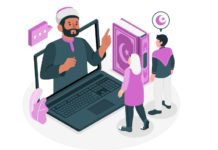Achieving high degrees of educational productivity is not only a need for students but also a must in today’s competitive academic scene. Maximizing learning results and effectively managing time and resources to either reach or surpass educational goals define educational productivity for students. This idea is essential in guiding students toward future problems and in enabling them to negotiate the demanding requirements of their educational paths.
Recognising Student Educational Productivity
For students, educational productivity refers to a spectrum of strategies and instruments meant to maximize the efficacy and efficiency of learning. It calls for techniques that sharpen time management, increase focus, and create conditions fit for educational success. By combining these strategies, students can not only raise their academic performance but also enrich their whole educational process, therefore producing greater results and more happiness.
Techniques for Improving Efficiency
Adopting particular tactics that meet individual learning styles and demands is essential if one is to really embrace and profit from educational productivity for students. These techniques call for well-defined objectives, task prioritizing, and the use of technology tools to bolster scholarly endeavours. Good goal-setting lets students concentrate their efforts on what counts most; prioritizing chores helps them effectively manage their workload, therefore minimizing burnout and encouraging constant output.
Using Technology to Advance Education
Improving educational output depends much on modern technologies. Digital tools and platforms provide a wealth of capabilities meant to support active learning and help to retain knowledge. Technology is leading the way in educational innovation, from interactive activities found in applications to systems that enable peer digital collaboration. These resources enable students to learn on their own and at their speed, making learning more interesting as well as more accessible.
Retaining Motivation and Control Stress
Maintaining motivation and properly controlling stress are also quite important components of student educational productivity. Academic settings can be high-stress situations; with effective stress management strategies, output can stay high. Students are urged to develop good study habits, schedule frequent breaks, and participate in leisure activities or exercise that help to lower stress. Moreover, keeping a balanced lifestyle guarantees that production does not decline when problems develop and helps to preserve drive over the long run.
Conclusion
Academic achievement and personal development depend on students’ educational output; hence, it is vital. Students can improve their learning capacity and reach their academic objectives by using efficient productivity tactics, using contemporary technologies, and keeping a balanced attitude to stress and time management. educational.tools include a variety of materials meant to help students optimize their academic potential for individuals wishing to investigate further tools and tactics to increase their educational productivity. Using these tools can help a student significantly change their educational path and open the path for success in both present academic activities and future professional ones.




